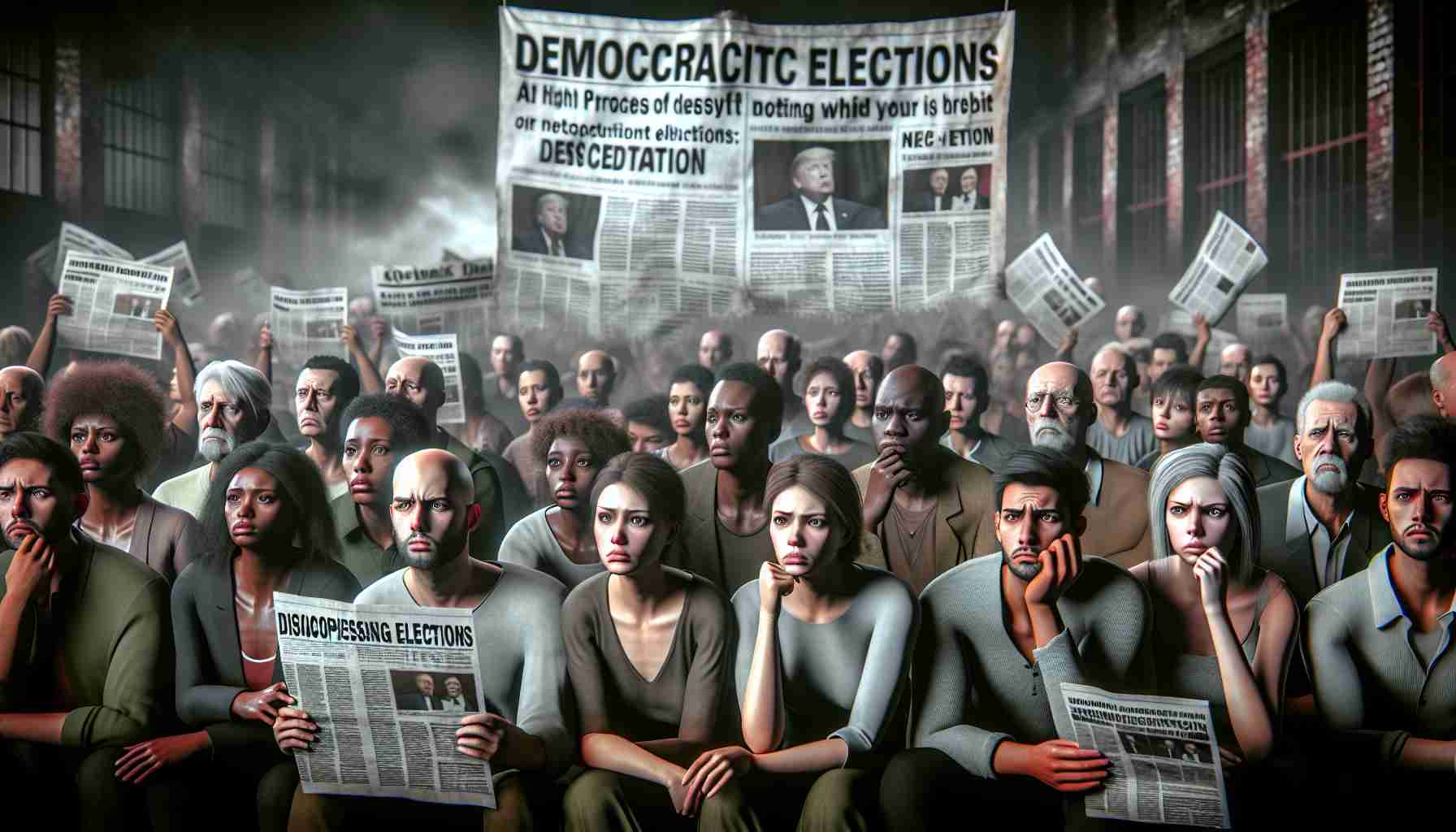Shocking Drop in Voter Enthusiasm Ahead of 2025 Bundestag Election
As the political arena heats up for the 2025 Bundestag election, a startling trend emerges: a significant rise in the number of undecided voters has been reported, with a dramatic increase of 25 percent now sitting at 28 percent. This rise leaves political analysts astonished, as such a phenomenon has not been observed before in election history.
Current political positions indicate a potential win for the CDU/CSU alliance, suggesting the AfD may also secure unexpected gains. Meanwhile, the ruling coalition, known as the “traffic light” alliance, appears to be struggling, with the SPD trailing closely behind the Greens and the FDP facing the possibility of not entering the Bundestag at all.
According to Forsa’s latest survey results, a growing number of individuals, particularly from the political center, are voicing their uncertainties and expressing hesitation about participating in the election. A staggering 33 percent of self-identified centrist voters indicate they might abstain from voting altogether.
Historical contexts suggest that if these trends persist, turnout could plummet to unprecedented lows reminiscent of the elections in 2009 and 2013. As the election nears, political leaders must consider how to engage with an increasingly disillusioned electorate, lest they face a record-breaking abstention rate on February 23, 2025.
Implications of Voter Apathy in the 2025 Bundestag Election
The startling increase in undecided voters ahead of the 2025 Bundestag election reveals deep-seated anxieties within German society. As political polarization intensifies, these trends reflect a broader global phenomenon where disillusionment with traditional political structures breeds a sense of alienation. With 28 percent of voters undecided, a significant portion of the electorate appears disconnected from mainstream political narratives, raising concerns about democracy’s vitality.
The potential impact on the global economy could be substantial. Low voter turnout often correlates with weakened government legitimacy, which can hinder the effectiveness of policies essential for economic stability. Investors and businesses thrive on predictability; thus, a fragmented political landscape may deter foreign investments or stall economic initiatives crucial for growth.
Moreover, the push for political engagement will likely shift focus toward digital mobilization and grassroots efforts. As candidates scramble to connect with a disengaged populace, the use of social media platforms for outreach could become essential. Consequently, the election may serve as a bellwether for future political campaigns, highlighting the need for innovative methods of engagement that resonate with disenchanted voters.
Finally, the environmental implications of voter disinterest are also noteworthy. A government lacking support may struggle to prioritize critical climate policies, further exacerbating the challenges posed by climate change. Ultimately, the 2025 Bundestag election is more than a national event; it stands as a critical juncture for Germany and a reflection of wider trends that affect global political and economic landscapes.
Voter Apathy Rises: Key Insights Ahead of the 2025 Bundestag Election
As the countdown to the 2025 Bundestag election progresses, the German political landscape is marked by alarmingly low voter enthusiasm, reflected in a notable increase in undecided voters. Reports indicate that 28 percent of the electorate remains uncertain about their voting choices, a significant 25 percent rise. This situation poses a unique challenge and indicates a potential shift in voter engagement strategies.
Emerging Trends in Voter Behavior
The current trends show that the political center is increasingly fragmented, with centrist voters expressing growing hesitance to participate. Surveys reveal that 33 percent of self-identified centrist voters are contemplating abstaining from the election entirely. This level of disengagement could drastically affect overall turnout, recalling the low turnout scenarios witnessed in both the 2009 and 2013 elections.
Potential Impact on Political Parties
Current polls suggest a favorable shift for the CDU/CSU alliance while indicating possible gains for the AfD. Meanwhile, the ruling “traffic light” coalition comprising the SPD, Greens, and FDP faces instability. The SPD has seen its support wane, trailing behind the Greens, while the FDP’s future in the Bundestag is uncertain, with some analysts predicting they may fail to exceed the electoral threshold.
Voter Engagement: Strategies for Political Leaders
In light of these trends, political leaders are confronted with the urgent need to reconnect with a disillusioned electorate. Effective strategies could include:
– Enhanced Communication: Clearly articulating party platforms and how they address current voter concerns.
– Community Engagement: Initiatives that foster direct interaction between politicians and constituents can help rebuild trust.
– Targeted Outreach: Focusing on the needs and preferences of undecided voters, particularly those in the centrist demographic, might encourage participation.
The Role of Social Media and Technology
Innovations in voter engagement also play a critical role. Political campaigns are increasingly utilizing social media and digital platforms to reach younger voters and engage undecided individuals. As traditional campaigning methods are being augmented with digital strategies, the ability to leverage technology can be a game-changer in rallying support.
Predictions for Voter Turnout
If the current trend of indecision continues, political analysts fear that voter turnout could reach historic lows. This could prompt serious reevaluation within parties, necessitating a focus not only on their political messages but also on the overall electoral experience for voters.
Conclusion: A Call to Action
As Germany inches closer to the election date of February 23, 2025, the emphasis lies on how effectively political parties can mobilize their bases and attract undecided voters. The implications of voter apathy extend beyond the election; they highlight a growing disconnect between constituents and their representatives. To avert a record-breaking abstention rate, all parties must innovate and adapt to the evolving demands of the electorate.
For further insights and updates on the electoral landscape, visit Federal Returning Officer.
